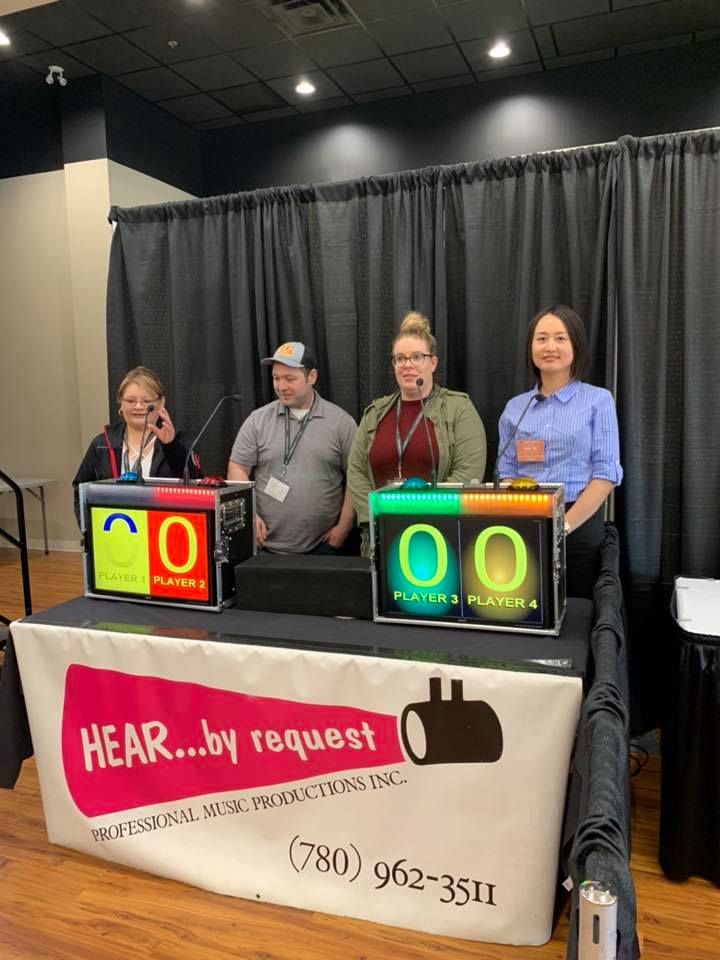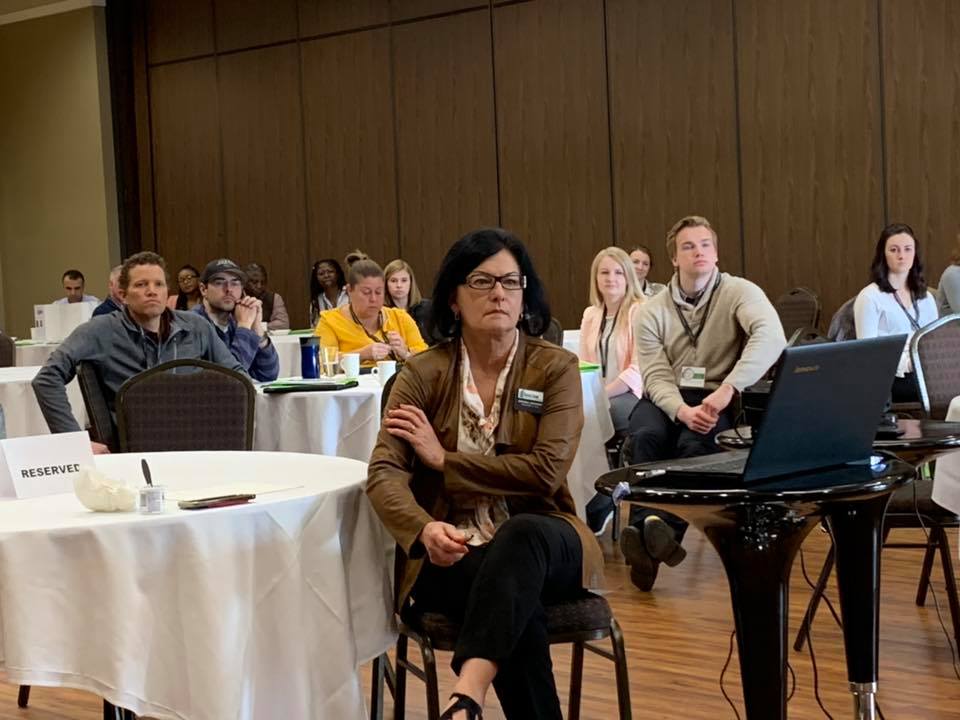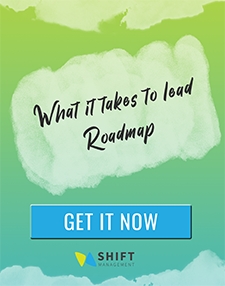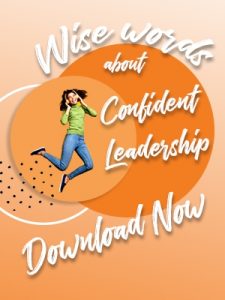
Why are we here?
”Diverse groups are collectively smarter, more original, more creative in their thinking, in their problem-solving.” Steve Johnson, author of Farsighted: How We Make the Decisions That Matter the Most Share on XTwo years ago I started talking to Brenda Johnson with the Spruce Grove and District Chamber of Commerce about a project to host several business breakfasts with diverse speakers on the topic of workplace inclusion. After having spoken to several other decision-makers who said something about the topic being outside their mandate, I was surprised when Brenda Johnson said the Spruce Grove and District Chamber would host not one, but all the breakfasts. Without any hesitation, she said, “For the past several years, we have been witnessing the fastest and most sustained business and industry growth in the province, and possibly in Western Canada. I would like us to be known not only as the fastest-growing, but as the most inclusive and diverse business community in the province.”
Reid Hoffman, Creator of LinkedIn said:
“When your group embraces diversity of all kinds – when you actively cultivate different viewpoints and different approaches to problem-solving – you immeasurably increase your chances of uncovering not just new ideas but new industries, new opportunities, and new fields of study. In contrast, when your group lacks diversity, you run the risk of hurtling headlong into your collective blind spot. I believe you need a diverse portfolio of viewpoints to see the opportunities others are missing.”
This kind of clear vision is what inspires people to work collaboratively towards common goals that will benefit all. And I have really been inspired by the attitude and work of this chamber. The reason we are here today at this first Inclusion and Diversity EXPO, is because visionary, inspired stakeholders from a variety of backgrounds and sectors believe that together we are better, and that we learn best when we actively seek diverse inputs to access the necessary collective wisdom for solving problems and achieving great things.
Which brings me to my next point. Unity in diversity is a universal law.
In the same way gravity is a universal law, with significant consequences if you choose to ignore it, there are social, psychological, and spiritual laws that affect how we live and work together. One of those laws is the law of unity in diversity. Consider the human body. There is no one organ or body part that is not essential to the smooth functioning and unified action of the whole. The heart does not say to the fingernail, “I’m more important than you are and I only work with other hearts.” Imagine a body that would try to either war against itself internally, or would try to replicate some parts and eliminate others. That would certainly result in the death or severe impairment of that body. Now extend this idea to the ecosystem. We used to have over 100 varieties of wheat in Canada. We now have two. The resulting allergies, diseases, and health issues for animals and people have come from the intentional reduction of the natural diversity that exists in any species. Across species there is also much diversity. Look at the hundreds of thousands of varieties of birds for example. As soon as one of the species becomes extinct, the hole in the ecosystem causes a huge ripple effect of damage across other species. Imagine how deprived the world would be if there was only one type of flower and it was only one colour. I could go on, but I’m sure you get my point. We NEED diversity. It is essential to life.
If we want business to grow, we must focus on ways to increase the diversity of our workforce, our ideas, out business offerings and our efforts. If any one sector becomes overly dominant, it risks toppling and falling, and damaging the other weaker sectors on the way down, as we have already seen. A diversified economy is a healthy economy. A healthy society is consistently showing new forms of diverse initiatives. An unhealthy society has restricted initiatives and less diversity. To tap into the benefits of diversity, we have to understand how important it is to bring people together to collaborate towards a unified goal. Without a unified goal diversity alone becomes chaos. Without diversity, unity alone becomes uniformity and eventually stagnation and death. This can be easily demonstrated with a little exercise using clapping that we can do right now. It works like this: first we all clap together the same way on the same beat at the same time. Then we all clap randomly not listening to each other. Finally, we clap while listening to the others. What emerges is a group rhythm that is always different and is built through the effect of contributing our diverse efforts towards a common goal while actively listening to what others are doing, then adjusting in small ways as required.
When clouds come together they make rain. Alone no cloud becomes a rainmaker. According to social scientist Nicholas Christakis, (hear he has to say in the podcast The TED Talk Radio Hour) when a group of engineers is placed into a social context that has the characteristics of exclusion, they will perform poorly and work against each other. When those same engineers enter a climate of inclusion, they will be more productive, creative, and collaborative. So, what we are going to do today is to experience a climate where people feel that they are free to contribute fully from their own diverse perspectives while working together towards a common goal. That goal is to increase our knowledge and skill to build inclusive and welcoming organizations.

The power of inclusion and the damage of exclusion
Diversity is the mix. Inclusion is the feeling that we belong and that we matter. Let me tell you an experience I had recently while working on a contract to help local theatre company increase their diversity and inclusion portrait. At the beginning of the contract, the board asked me to attend a meeting to explain the project and engage their input. This is what happened when I arrived at the meeting: I stood for 10 minutes on the outside of the board meeting circle with nobody acknowledging me. Finally, somebody said, “looks like our guest speaker has arrived.” I stood and waited with nobody indicating where I should sit in that closed circle. I finally found my own chair and tried to find a place to sit at the table. Nobody introduced themselves or asked me to introduce myself to them. They continued with their meeting as if I had not been invited. 30 minutes later, one of the board members asked if I was going to be contributing anything to the meeting. At that point, it became clear that no one had read the proposal, and did not know why was there. The room was hostile and unfriendly and it was a lot of effort on my part to get them to warm up and discuss their ideas. Everybody was about the same age, and they were all from the same demographic. It was a very chilling feeling of being intentionally excluded.
In contrast, at the end of the project, most members of that same board came together with 24 diverse actors, playwrights, and theatre enthusiasts. We started the workshop by asking what each person needed to feel safe to contribute. We got to know each other through some meet and greet activities and opportunities to laugh and feel comfortable with each other. The group learned about the characteristics of intercultural communication so that they had an idea of where we were headed. Once everyone was comfortable we discussed the thorny issues that had come up and identified the elements of a plan to move forward as a group. I tell this story to show that it is possible for any organization or workplace to be more inclusive and more diverse, and to use the inputs of diversity together with the belonging of inclusion. But it does take intentionality, specific actions, vision, guidance and willingness to learn. Which brings me to my second last point.
Why we may be resistant to diversity and inclusion
Many people don’t openly support diversity and inclusion. This comes from two tendencies: self confirmation bias and safety. Let’s start with the first one. We all have a tendency towards self confirmation bias. This means that whatever we believe our experience of the world to be, is what we think is right, good, competent and beautiful. And when others do things differently from us, we think that they are doing things wrong, that they’re bad, or that they are incompetent or ugly. When we make a mistake, self confirmation bias tells us that it is because of circumstances. However, when others make that same mistake, we will typically assume that they have character flaws. If I’m late, it’s because there were problems with the traffic or because I couldn’t find a parking spot. If you’re late, it’s because you’re lazy and inconsiderate. You see how that works? Until we become aware that we are always being affected by our own false self confirmation bias, it is difficult to move into the experience and to empathize with the experiences of other people.

The other reason we may not be open to diversity and is that we may not feel safe. Several interesting social psychology and cultural studies reveal that when people feel threatened or unsafe, even though that feeling is overwhelmingly wrong, they are closed to difference. Conversely, when they feel secure and safe, they are curious and interested in difference. There are even studies that link extreme right and left wing tendencies to hypersensitive misperceptions of personal safety. The more unsafe people perceive themselves to be, the more likely they are to believe that anyone who is different from them is likely to be dangerous. So to increase interest in diversity and inclusion, increase safety. But how?
There are many useful exercises and movies, books and courses, thinkers, artists, and comedians who can get us started on this journey. It is a lifetime endeavour and we never stop learning. But for today, I have a few simple strategies that can get us all started.
-
Ask yourself, “what do I need to feel safe to interact with someone who is different from me?” Then ask yourself, “what do others need to feel safe with me?” Asking these two questions will certainly improve hiring, onboarding, and first experiences with employees from a variety of backgrounds.
-
To increase your organizational diversity portrait, consider targeting a specific new demographic in partnership with an organization who has access to that demographic. An example from a local business is Jen-Col construction. They decided to increase the number of women in leadership positions, by forming a partnership with Women Building Futures. Their method was simple: twice a year bring on a group of six female interns specifically chosen by their partner, Women Building Futures, for their likelihood to be a good fit with the company. At the end of the internship, Jen-Col hired the best suited interns. This brought not only qualified women supervisors to their first and second levels of management, but it increased their cultural diversity since the women were from aboriginal, and diverse cultural groups. They found this method to be an excellent way to find qualified candidates in a new demographic and are seeing the results and their growth and profitability.
- Remember that it is the consistent, intentional, small things that make the biggest difference over time. If you consistently greet and welcome the people you work with, they will feel included and valued. If you consistently take small steps to learn something new, to expose yourself to new ideas, and to interact with people who are from different races, religions and cultures, you will be surprised at how much less you judge others and how easily you recognize talent that doesn’t look or sound like you. As you do this, remember the importance of working with the universal law of unity in diversity.
- Don’t take the safe path, take the path that will make an important difference. Sally Krawcheck was the only senior financial analysist brave enough to speak out about the fall of American General. She was also the only woman in her Wall Street company. They told her not to publish her results which she called “Woah Nellie. American General is about to crash.” Effectively predicting the Turned out that article got her on the cover of Fortune Magazine and got her publicly fired on the cover of the Wall Street Journal. A whole lot of lucrative opportunities came out of that. Not because she took a stupid risk, but because she had the data and knowledge to sound the alarm and she knew it was the right thing to do to stop people from financial ruin. So if you have researched your platform and you found something that will help or something others need to know even if it is unpopular, do it. Don’t wait for the safe, right time because it will never come. Just make sure that action on investigation, multiple view points and diverse contributions.
I will leave you with an approach to benefit from the day. Come with an open mind. If you experience internal resistance, remember that it is likely self confirmation bias or a false perception of danger. Consider the importance of seeing the long game results, doing your research and of doing the right thing even if it is hard. And test your ideas through the lens of diversity and inclusion to make sure they will benefit rather than harm.
To help you out with that project, here are three wise quotes from Mahatma Gandhi:
“It is unwise to be too sure of one’s own wisdom. It is healthy to be reminded that the strongest might weaken and the wisest might err.”
“I suppose leadership at one time meant muscles; but today it means getting along with people.”
“In a gentle way, you can shake the world.”
About Marie:
Marie Gervais, PhD, CEO Shift Management is a business-to-business entrepreneur who specializes in helping employers train their middle management to lead, get their workplace learning online and interactive, and conduct team assessments to figure out who to promote and how. She has a background in integrating internationally-trained individuals to the workplace and has supported many businesses in their efforts to hire, retain, support and promote immigrant and diverse employees.
Get in touch – she would love to hear from you: marie@shiftworkplace.com or 780-454-5661






